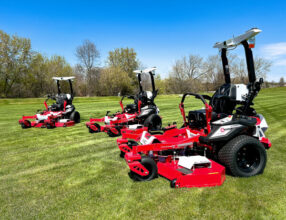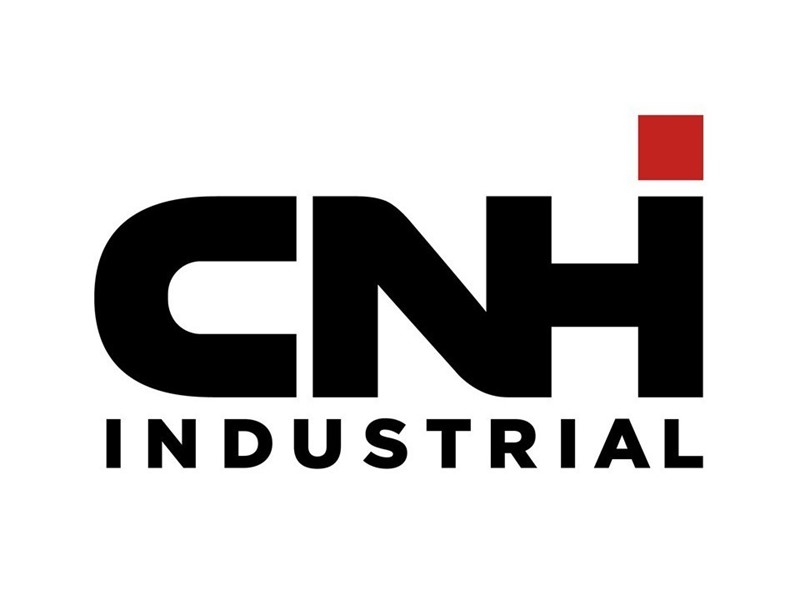6 costly mistakes and how to avoid them
By Bob Clements
The only mistake that is a bad mistake is the one that you don’t learn from. After being in business for more than 20 years, I have made some award-winning mistakes, and when my wife and I were young in our business venture, we often made the same mistake more than once. In this article, I want to reflect on some of the common mistakes I find that dealers make and hopefully help you either steer clear of them or at least help you to minimize the impact they make on your dealership.
Mistake #1 — Working with too many manufacturers
Most dealers we work with have too many competing lines. I am an advocate of carrying two manufacturers that complement each other with ride-on equipment — zero-turn riding mowers and tractors — and limiting yourself to one manufacturer on the handheld equipment and walk-behinds. I know that most dealers carry multiple ride-on lines and two, three or even four handheld and walk-behind lines. But in doing so, you have automatically increased your wholegood inventory levels, strained your floor-plan dollars, complicated your selling process, added to your parts inventory, and reduced the overall profitability of your service department by having to manage multiple warranty programs while attending multiple service schools.
By reducing your number of manufacturers to two or three, you also reduce the number of programs to understand and track, the number of finance programs to deal with, the number of co-op advertising programs to think about, and the number of times you are interrupted during the season by salespeople expecting a little of your time because you handle their lines. Most importantly, you reduce the amount of time it takes to complete a sale to a customer during your busiest time of the year. When customers walk into most dealerships today, they are overwhelmed with the choices they have in front of them. Keep in mind when you give customers two or three options, they are going to ask you to spend a little bit of time explaining each one of them. If you spend a total of 30 minutes with a customer explaining three different manufacturers’ equipment, you could reduce your selling time by one-third if you eliminated the weakest of the three lines from your inventory.
Mistake #2 — Not marketing your parts and service departments
Every dealer that I work with understands the importance of marketing their wholegoods and the impact that proper marketing will make on overall sales. Yet, few dealers will focus time or money on marketing their two most critical departments: parts and service. If you are currently spending 3 percent of your projected gross wholegoods sales on marketing your dealership for wholegoods, why not commit the same percentage of parts and labor sales to aggressively grow those departments?
Marketing your parts happens in your store by your parts people. It starts with weekly specials specific to your commercial cutters. You might highlight specials on items like 5-pound spools of trimmer line, 2-cycle oil, blades and filters. It’s your parts staff’s responsibility each week to set up displays that highlight must-have products with pricing that will entice customers to buy those products while they are in the store purchasing other parts. A portion of your marketing dollars should be allocated to professional displays and signs. Another portion should be used for incentives for your parts people to up-sell customers. You will be amazed at how many more sales will take place when you offer your employees a little incentive to just ask. In the spring and fall, the parts department should put together a mailer that advertises special pricing on season-appropriate items.
The service department is going to invest its marketing money during the fall and winter by advertising service specials and discounts on pickup and delivery. If you are not currently doing so, you are missing a great opportunity to keep your service techs busy and your shop profitable all yearlong.
Mistake #3 — Passing out door prizes
It is not uncommon for employees to expect a pay raise as a new year begins, and there is nothing wrong with giving employees more money — I just don’t believe in giving more money to employees just because they have worked for me another year. I am a firm believer in not handing out “door prizes” for another year of employment but in giving employees the ability to make more money based upon their performance.
By creating a performance-based compensation program, your employees are naturally driven to help you grow your dealership. The more profitable you are, the more money they have the ability to make. Regardless of an employee’s position in your dealership, with a little effort you can easily put together a program that is fair and motivating for your entire team.
Most dealers already have a program in place to compensate those employees selling wholegoods based upon either gross or net profit. You can do the same thing for your parts department by setting a minimum acceptable level for gross profit and a sales goal based upon last year’s parts sales for the month. In service, your program should be based upon a tech’s bench efficiency and paid out when the tech achieves an efficiency rate of at least 85 percent. Your setup person can be compensated based upon meeting or beating a predetermined time for each piece of equipment set up. Your office staff can be compensated based upon a bonus pool from each department.
Mistake #4 — Not having a solid pricing strategy
A solid pricing strategy is a critical component of your ability to produce extreme profit for your dealership. Whether it is service, parts or wholegoods, nothing is more important than pricing yourself to be competitive in the marketplace. I am not saying to be competitive you have to offer a lower price. Actually, the opposite holds true. Since only about 15 percent of the North American population buys solely on price, you don’t want to strive to be the low-price leader in your marketplace. Keep in mind that 85 percent of the population will pay more for your equipment if you can show those people that your dealership is worth paying extra. Dealers who strive to have the lowest price are losing margins that they could be taking almost 85 percent of the time. It doesn’t take a genius to lower prices — anyone can do that. As a dealer, your goal is to charge more than your competitor, by adding value to the sale, by leveraging your total dealership.
So for most people, it’s not the equipment they will pay more for — it’s the value you as a dealer add to the equipment that makes it worth more. How do you add value? Well, it’s simple. From a customer’s perspective, there are only three things that add value: time, money and pain — “Save me time, make me money, or eliminate a pain from my life.” As a dealer, you have to think in those terms. You need to constantly ask yourself: “How does what we do as a dealership save the customer time, make the customer money, or take away a part of the customer’s life that is painful?” The more that you can do any of the three, the better your ability is to sell your equipment at a premium.
Another way to add value is to sell the “whole dealership” when you sell your equipment. Your dealership consists of multiple profit centers: wholegoods, parts, service and delivery. When you sell a piece of equipment, why not at least give the customer the ability to buy your “entire dealership” at the same time? We work hard with our dealers to get them to package parts, service and delivery as at least an option for customers to buy. As a dealer, you can easily create packages to sell with your equipment that are bundled combinations of parts, service and delivery with an extended service component.
Mistake #5 — Weak signage and poor exterior image
If I were to pull into your dealership today, what would I see? Would I see a sign that grabs my attention or one that is in a state of disrepair, faded and unappealing? Would your storefront be pasted with manufacturers’ signs to a point that your brand — your company sign — is just a part of the background clutter? Keep in mind that every sign that you add to the outside of your dealership simply clutters your message and the front of your store. It also usually becomes a distraction rather than the attraction that your manufacturers tell you it will be. I have no problem with a dealer having one or maybe two, non-competing manufacturers’ signs on the outside, but more than that starts to take away from the impact of your own signage.
If customers pull into the parking lot of your dealership and it is full of potholes and weeds growing out of the cracks, you have just communicated a lot about your store. If your landscaping is nonexistent or poorly maintained, you’ve told them a little more of what they will find once they enter your store. If they pull into your parking lot and see that your storefront has faded signs or is in need of paint or cleaning, you’ve created an image in the customers’ minds that will affect their impression of what’s inside. Keep in mind that it’s just as important to merchandise your outside showroom as it is your inside showroom.
Mistake #6 — No standardized processes
As an owner/manager, your task is to provide employees with the necessary tools to improve their performance. Your goal is to change your employees from thinking about just performing a task to thinking about ways to improve how they do it. How much more exciting would it be for your employees knowing that every day their goal was to improve what they do with the opportunity to make more money?
To make this happen, you need to have a few things in place. First, you must have a standard way to do each aspect of the job your employees perform. You can’t improve something if there is not a set way of first doing the task.
As we work with dealers, our focus is to help them break down each aspect of their dealership and create standard operating procedures on everything from wholegoods, parts and service. Once they have the standard processes in place, the goal is to work individually and collectively with managers and employees to improve their processes by focusing on eliminating anything that doesn’t add value to their customers.
Keep in mind that in almost all cases, the best people to document and then improve the processes in your business are the people you are paying to do the work right now. Who is better than your delivery people to document your delivery process and then work to make the process better by eliminating wasted time, fuel and energy? Who is better to document and improve the way you file and track your warranties than the person who does your warranties?
Mistakes are a part of doing business — learning from them is what makes you successful. I challenge you to make 2011 the year that you move your dealership to a higher level of performance and profitability. If you are willing to put in the effort and learn from your mistakes, success will be yours.
Bob Clements is the president of Bob Clements International, Inc., a consulting firm that specializes in the development of high-performance dealerships. His organization works hands on with dealerships throughout North America, helping them attain the personal freedom and financial wealth all owners strive to achieve. For more information, contact Bob Clements at (800) 480-0737 or bob@bobclements.com or visit his Web site at www.bobclements.com.



